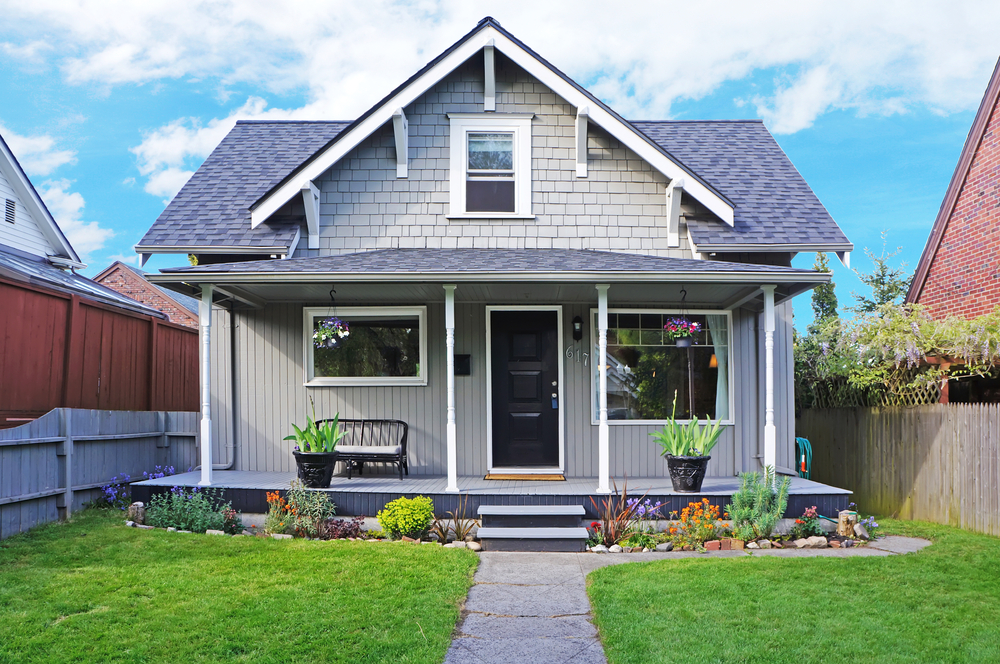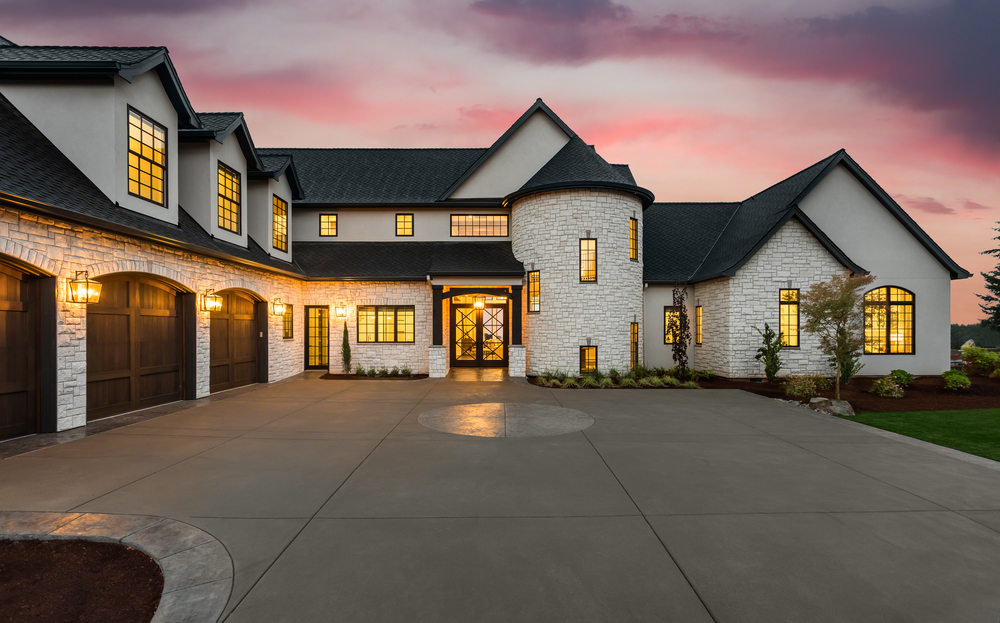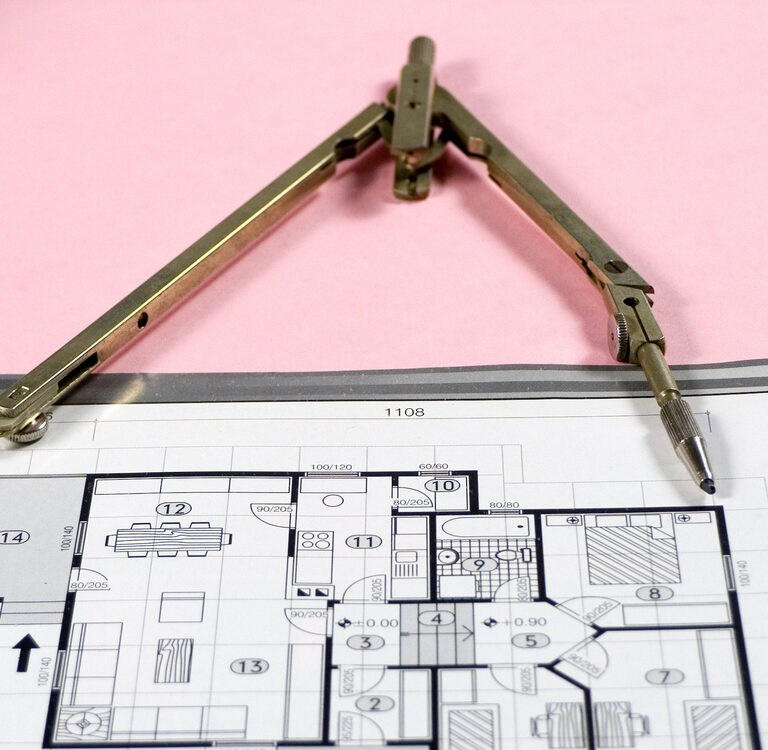The average square footage of a house in the United States is around 1,650 square feet. Newer homes, however, are typically much larger than the national average, with new construction averaging a whopping 2,500 square feet. Do you really need 2,500 square feet of house? What factors should you consider when calculating what size house will comfortably fit your family? Keep reading for answers to these questions and more.
The Average Square Footage of a House by Room Count
That 1,650 square feet is based on the median in the United States, but the actual average can vary widely between states, with homes averaging as much as 2,305 square feet in Utah or as little as 1,528 square feet in Nevada.
Average square footage also varies by room count. The average 3-bedroom will, of course, be bigger than the average 2-bedroom. While the extra bedroom itself accounts for most of that, some of that extra square footage comes from just having more spacious layouts, extra bedrooms, and so on. Here’s the average square footage of a house by room count:
- 1-bedroom homes: 900 square feet
- 2-bedroom homes: 1200 square feet
- 3-bedroom homes: 1400 square feet
- 4-bedroom homes: 2400 square feet
With homes getting bigger and bigger, the question is: why do people want such big houses? How much house do you really need? Is it better to err on the side of too much house or too little house? In the next sections, we’ll give you some tips on how to decide how much square footage is right for you and why bigger isn’t always better.
How Much Square Footage Do You Need?

How much house you really need depends on so many different factors that it’s hard to throw out any kind of rough estimates. Even so, we’ll try to do it anyway. To get a very rough calculation, just to get you started, multiply 400 by the number of people living in the house. So, a 4-person family would need 1,800 square feet (4×400).
Based on the average sizes discussed earlier, 1,800 square feet would put you in either a larger than average 3-bedroom house or a smaller than average 4-bedroom house. Both of these are right on target for a 4-person family.
Note that this formula doesn’t really hold up for individuals. A single person will probably want more than 400 square feet, unless they’re a tiny home enthusiast. However, for family sizes of two or more, it’s a good starting point.
From this initial calculation, you can shrink or expand based on your answers to the following questions:
Will the Number of People Change?
If you’re looking for a new house when your kids are getting to the age where they’ll head off to college or start their adult lives soon, it may make sense to go a little smaller than you need, since you won’t need that extra space for long.
For that 4-person family, we could potentially go as small as a two-bedroom, or at least a 3-bedroom that’s closer to the 1400 square foot average.
If that 4-person family, instead, plans to have more children, they’d want to add some square footage, instead of taking it away. Adding an extra 100-200 square feet per baby is a good place to start. You might even add the full 400 square feet per future child if you plan for this house to be your forever home.
If your grandparents or extended family are coming to live with you on a permanent basis, adding a full 400 square feet per head is recommended to allow for the adults to feel a little less cramped. Moreover, detached guest houses or self-contained apartments inside the house will keep the peace by allowing the adults to maintain some independence and space.
Do You Plan to Host Events?
For homeowners who plan to be “the house” everybody goes to for the holidays or the main meeting place for friends to hang out on weekends, you may want to add some extra square footage to account for the expected crowd. To get a ballpark estimate, add about 25 square feet per person for the average crowd size you expect. So, if thanksgiving dinner is going to be about 20 people, you might add an extra 500 square feet to your estimate.
However, the key in this case is to get that extra square footage in the form of larger common areas, like the living room, kitchen, and dining room. You could potentially get around this by opting for open floorplans, where all the living area is one open layout.
If you don’t plan to host a lot of people, or at least not all in one big crowd at the same time, not only would you not add any square footage for this, you might actually go smaller.
Do You Travel or Go Out Often?
For frequent travelers or people who just spend a lot of time out and about, this house might be more like a landing pad than a home. That doesn’t mean it won’t feel like a home, of course. It just means you probably don’t need as much room to spread out, since you aren’t usually there long enough to feel cooped up.
If you’ve ever thought, “I should Airbnb my house while I’m gone,” you might travel frequently enough to warrant going smaller than the rough calculation given at the beginning.
Do You Work From Home?
If this house is also going to be your office or workplace, a little extra space to dedicate to work makes sense. In that case, though, the kind of space you’re adding on matters. For example, if you run an artisanal soap sculpting business out of your home, you might prefer a garage or outdoor workspace to do your crafting, as opposed to an extra bedroom inside.
If you meet clients in your office, like a therapist or consultant might, you would probably need that extra space to be clearly separated from the rest of your house, such as a finished basement or a detached guest house.
If you work at your desk most of the day and don’t need a crafting space or customer-ready space, an extra bedroom or a finished attic that can become an office will usually be the more cost-efficient way to add a workspace to your home.
For that 4-person family, you might be able to make this happen in 1,800 square feet if you have an attic or basement you could finish, or if the two kids like each other enough to share a room, so one of the bedrooms can be your office.
Do You Want Passive Income Opportunities?
Having the option to collect rent on your property is a great way to secure your retirement (or to help with the bills now). If you think renting might be part of your plan for the property, figure out how that might look. You have two basic options:
a) Get a small- to moderate-sized home that will be easier to rent out after the kids grow up and you downsize to a smaller place. Large houses don’t make good rental properties because few people want to pay that much in rent.
b) Get a large enough home (or a moderately sized home with enough land to expand) that you can convert it into a multifamily property later. When you’re ready to downsize, you can turn your single-family house into a duplex or a triplex. Then, you can either live in one unit and rent the others, or move out and collect rent on all the units.
Whichever option you prefer will determine how much square footage you should opt for now. For option A, our 4-person family would stay closer to that 1,800 or even less. For option B, they might go as high as 2,500 square feet to have plenty of space for converting the house into a multifamily property.
The Downside of Going Big

While sprawling ranches and towering multi-story homes can tempt you with promises of room for your family to spread out, it’s not always the best choice. As you estimate how much space you need, keep in mind that “going big” does come with important downsides that you need to factor into your final decision. Here are a few that will have the biggest impact on that decision:
You Probably Won’t Use It
Most families, regardless of size, tend to spend most of their time in the kitchen and living room. Everything else is just extra space. You might have had big dreams about the attic “playroom” and the basement “game room” but the amount of use they’ll actually get likely won’t make up for the higher bills, higher maintenance, and extra time spent cleaning.
Bigger Houses Have Bigger Bills
Bigger houses use up more gas, electricity, and water. Even with top-notch insulation, they cost more to keep warm in the winter and cool in the summer. Because there’s more house, there’s also more to inspect, repair, replace, and keep up. For example, more plumbing means more places where a pipe can spring a leak. More roof means more shingles to get damaged.
It’s not just more expensive to buy, it’s more expensive to keep up.
There’s a Lot More House to Clean
Before you consider upsizing, think about how long it takes you to clean your current home. Now add time to account for the extra rooms you’ll have to vacuum, the extra toilets you’ll have to scrub, and the extra windows you’ll have to wipe down.
Professional cleaners, who literally do it for a living, estimate that it takes 1.5 hours of cleaning per 1,000 square feet. That’s assuming you clean weekly, and it doesn’t include the more heavy-duty spring-cleaning type chores, like cleaning out the fridge or degreasing the oven.
Is a 3,000 square foot home worth spending 3+ hours every week on cleaning, or the added bill of hiring a regular cleaning service?
You’ll Create More Clutter
With more rooms to decorate, you have to buy more furniture. With more closet space and garage storage, it’ll be years before you realize how much unnecessary stuff you’ve accumulated for no reason and probably forgotten about. You can Marie Kondo your home when you notice it, but you’ll likely end up accumulating more stuff after you clear the old junk out and, in the meantime, you’re spending a lot of money on stuff you used once and then stuck in a closet somewhere to live out its final days in neglect.
They’re Harder to Sell
The market for larger houses exists, but it’s a lot smaller. That’s because big houses are either priced out of most people’s budgets or are just much larger than what the average family needs. If you have hopes of reselling your house down the road, don’t go big just now.
Final Thoughts
Hopefully our helpful and informative guide has given you a good idea of how to estimate the square footage you require for your unique living situation, and presented you with some important considerations to mull over when buying a house. Like anything in life, it can be tricky to find the right fit, though with any luck this article will assist you in making your decision.
